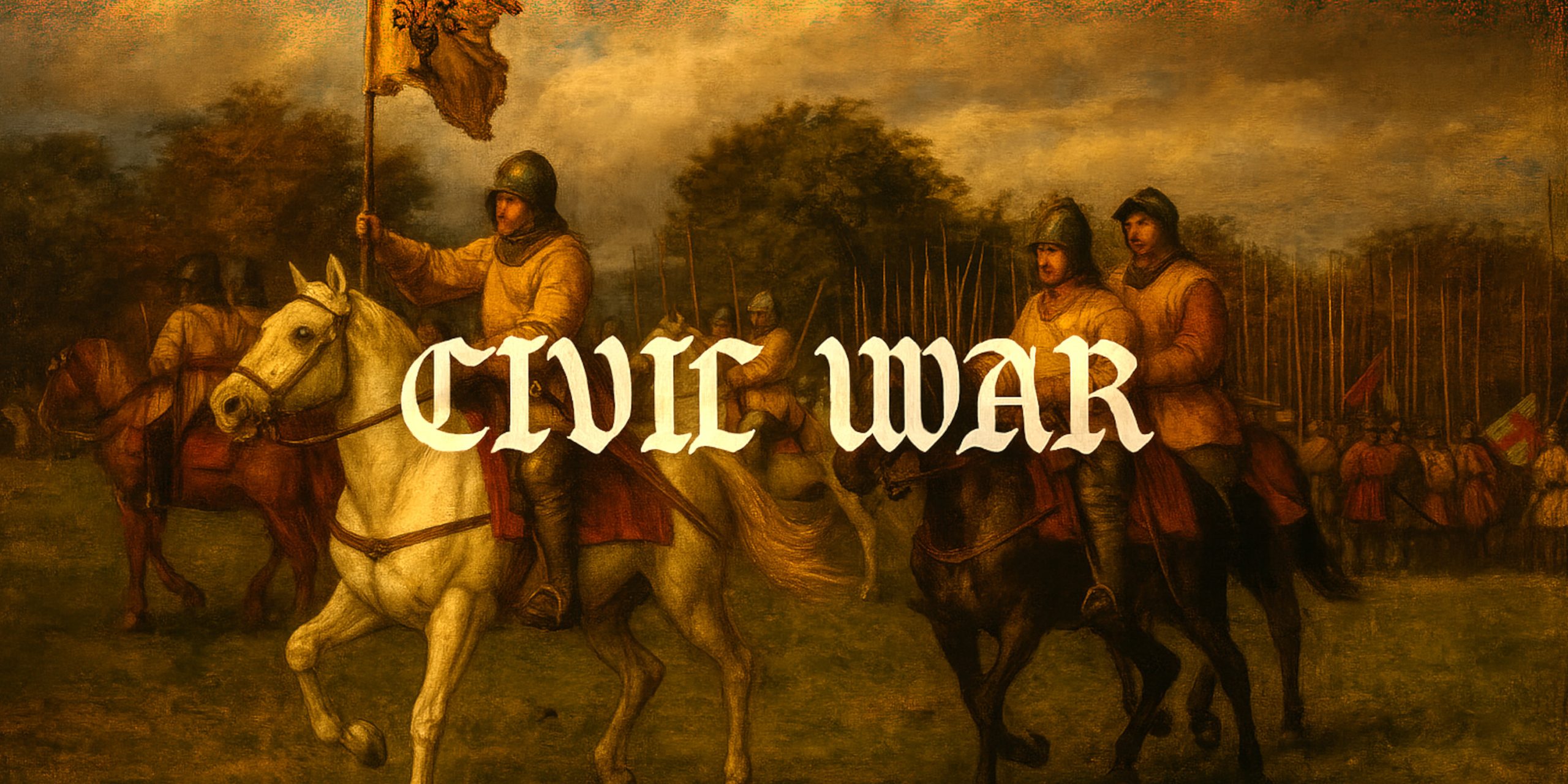
The English Civil War remains one of the most compelling periods for historical reenactment in Britain. With its clash of monarchy and parliament, Puritans and Royalists, and brother against brother, it offers a rich canvas for those who wish to bring 17th-century history back to life. Reenactments of this period, particularly those centred on the Cavaliers and Roundheads, have grown into detailed and passionate displays of living history.
The Historical Background
Between 1642 and 1651, England was torn apart by a series of civil wars between the Royalist supporters of King Charles I, known as the Cavaliers, and the Parliamentarians, known as the Roundheads. The conflict spanned more than just politics; it was a cultural, religious, and military struggle that reshaped the nation.
The Cavaliers were typically associated with the aristocracy, high Anglicanism, and a belief in the divine right of kings. They favoured flamboyant dress and often came from landed backgrounds. In contrast, the Roundheads were largely composed of Puritans, merchants, and commoners who rejected royal absolutism and pushed for a more representative form of governance. Their name came from their distinctive short-cropped hair, a visual break from the flowing locks of their Royalist counterparts.
Reenactment Culture and Organisations
Today, events across the UK recreate battles, sieges, and camp life from the Civil War era. Groups such as the Sealed Knot and the English Civil War Society have dedicated decades to accurate and immersive performances. These organisations take historical precision seriously, drawing from period manuals, letters, and archaeological evidence to inform everything from military drills to civilian attire.
Members typically portray either a Royalist or Parliamentarian regiment and commit to portraying not only the soldiers but also the camp followers, clergy, merchants, and medics who travelled with them. This full-spectrum approach allows for dynamic displays that reflect not just warfare, but the social fabric of 17th-century Britain.
Arms, Armour, and Uniforms
Civil War reenactments feature an impressive array of weaponry and kit. Pikemen in steel pot helmets and buff coats march alongside musketeers armed with matchlocks and bandoliers. Officers wield rapiers, while cavalry reenactors thunder past with swords and pistols.
Royalist forces are typically dressed in more ornate clothing with colourful sashes, feathers, and plumed helmets. Parliamentarian troops often wear simpler garb, sometimes marked with orange or tawny coats depending on the regiment. Armour is minimal compared to earlier centuries, but breastplates and helmets are still a common sight, especially among pikemen and cavalry.
Battle Reenactments
Large-scale reenactments of battles such as Edgehill, Naseby, and Marston Moor recreate the strategic complexity of Civil War combat. These events often involve hundreds of participants and use smoke, drumming, shouted commands, and mock artillery to bring the battlefield to life. Spectators are given context through narrated commentary, historical displays, and living history camps.
While safety is paramount, there is no shortage of drama. Reenactors are drilled in formations and firing sequences, allowing for tightly choreographed clashes that capture the confusion and brutality of 17th-century warfare.
The Living History Experience
Beyond the battlefield, Civil War reenactments also explore the domestic and political sides of the era. Reenactors engage with the public through interactive displays of cooking, crafts, religious debates, and even period music. Some go as far as staging mock trials, executions, and Parliament sessions to deepen the immersion.
Educational outreach is a key component. School visits, museum collaborations, and anniversary events often feature reenactment groups who explain the causes and consequences of the war in accessible and vivid terms.
Why It Matters
The English Civil War left a legacy that shaped British constitutional monarchy, religious tolerance, and the role of Parliament. Reenactments offer a chance to revisit these foundational debates in a tactile, human way. By embodying the people of the time, from common soldiers to aristocratic commanders, reenactors help preserve a vital part of Britain’s political and military heritage.
Civil War reenactment is an act of remembrance, education, and connection to a turbulent age that still echoes in the institutions of modern Britain. Whether you march with Fairfax or charge with Prince Rupert, the story being told is one that belongs to all of us.



